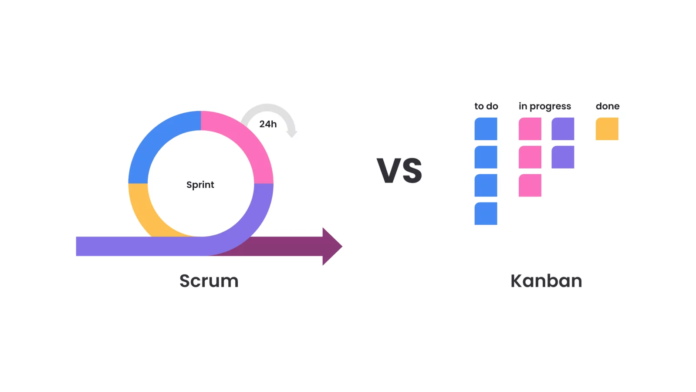Fun Facts
- Kanban was originally developed by Taiichi Ohno for the manufacturing industry, but it has since been adapted for use in software development, marketing, and other fields.
- Kanban boards were originally used to visualize the flow of materials in a factory, but today, they are used to visualize the flow of work in a variety of settings.
- Scrum was first developed by Jeff Sutherland in the 1990s and is based on the principles of transparency, inspection, and adaptation
- Scrum framework is heavily used in software development, but it is also used in other fields like product development, manufacturing, and marketing.
- According to the “State of Agile” report, Scrum is the most popular Agile methodology, followed by Kanban.
- Scrum team have a clear end goal and a set of deliverables that need to be completed within a specific time-frame, while Kanban focuses on managing the flow of work and implementing changes as they happen.
Introduction
Kanban and Scrum are two popular methodologies for project management, and both have their own advantages and disadvantages. In this blog post, we will explore the differences between Kanban and Scrum and help you decide which methodology is best for your team.
Project management is a vital aspect of any business, and choosing the right methodology is crucial for success. Kanban and Scrum are two of the most popular methodologies, and both have their own set of advantages and disadvantages. In this blog post, we will explore the differences between Kanban and Scrum, and help you decide which methodology is best for your team.
What is Kanban?
Kanban is a visual system for managing and optimizing workflow. It is a pull-based system, which means that tasks are only started when there is capacity to complete them. Kanban boards are used to visualize the workflow, with tasks represented by cards, and columns representing different stages of the process. Kanban is best suited for teams that have a high level of variability in their workloads.
What is Scrum?
Scrum is an Agile framework for managing projects. It is based on the principles of transparency, inspection, and adaptation. Scrum teams are self-organizing and cross-functional, with a focus on delivering working software in short sprints. Scrum is best suited for teams that have a well-defined and stable workload.

Kanban vs Scrum
Kanban and Scrum are both effective methodologies for project management, but they have different strengths and weaknesses. Kanban is better suited for teams that have a high level of variability in their workloads, while Scrum is better suited for teams that have a well-defined and stable workload.
Kanban allows teams to easily adjust their workflow and priorities as the project progresses, making it easy to manage projects with changing requirements and priorities. Scrum, on the other hand, focuses on delivering working software in short sprints, making it a great option for teams that need
10 Key Differences between Kanban and Scrum Methodology“

- Kanban is a pull-based system, while Scrum is a push-based system.
- Kanban does not have time-boxed iterations (Sprints) like Scrum does.
- Kanban teams do not have predefined roles, while Scrum teams have roles such as Scrum Master and Product Owner.
- Kanban teams focus on managing the flow of work and implementing changes as they happen, while Scrum teams focus on delivering working software in short sprints.
- Kanban allows teams to easily adjust their workflow and priorities as the project progresses, while Scrum has a fixed set of deliverables that need to be completed within a specific time-frame.
- Kanban is best suited for teams that have a high level of variability in their workloads, while Scrum is best suited for teams that have a well-defined and stable workload.
- Kanban boards are used to visualize the workflow, with tasks represented by cards, and columns representing different stages of the process, Scrum uses burndown charts, sprint backlogs, and sprint planning meetings.
- Kanban does not have a concept of “Done” like Scrum does.
- Kanban does not have the concept of Retrospectives like Scrum does.
- Kanban does not have a fixed length of iterations like Scrum does, so it’s a more flexible and less prescriptive approach to project management.
Conclusion
In conclusion, Kanban and Scrum are both powerful methodologies for project management, but they have different strengths and weaknesses.
Kanban is best suited for teams that have a high level of variability in their workloads, while Scrum is best suited for teams that have a well-defined and stable workload.
Both methodologies have their own set of advantages and disadvantages, and it’s essential to understand your team’s specific needs and work environment to decide which methodology is the best fit.
As both methodologies are designed to improve the way teams work, it is important to continuously inspect and adapt the chosen methodology to ensure it remains effective.




